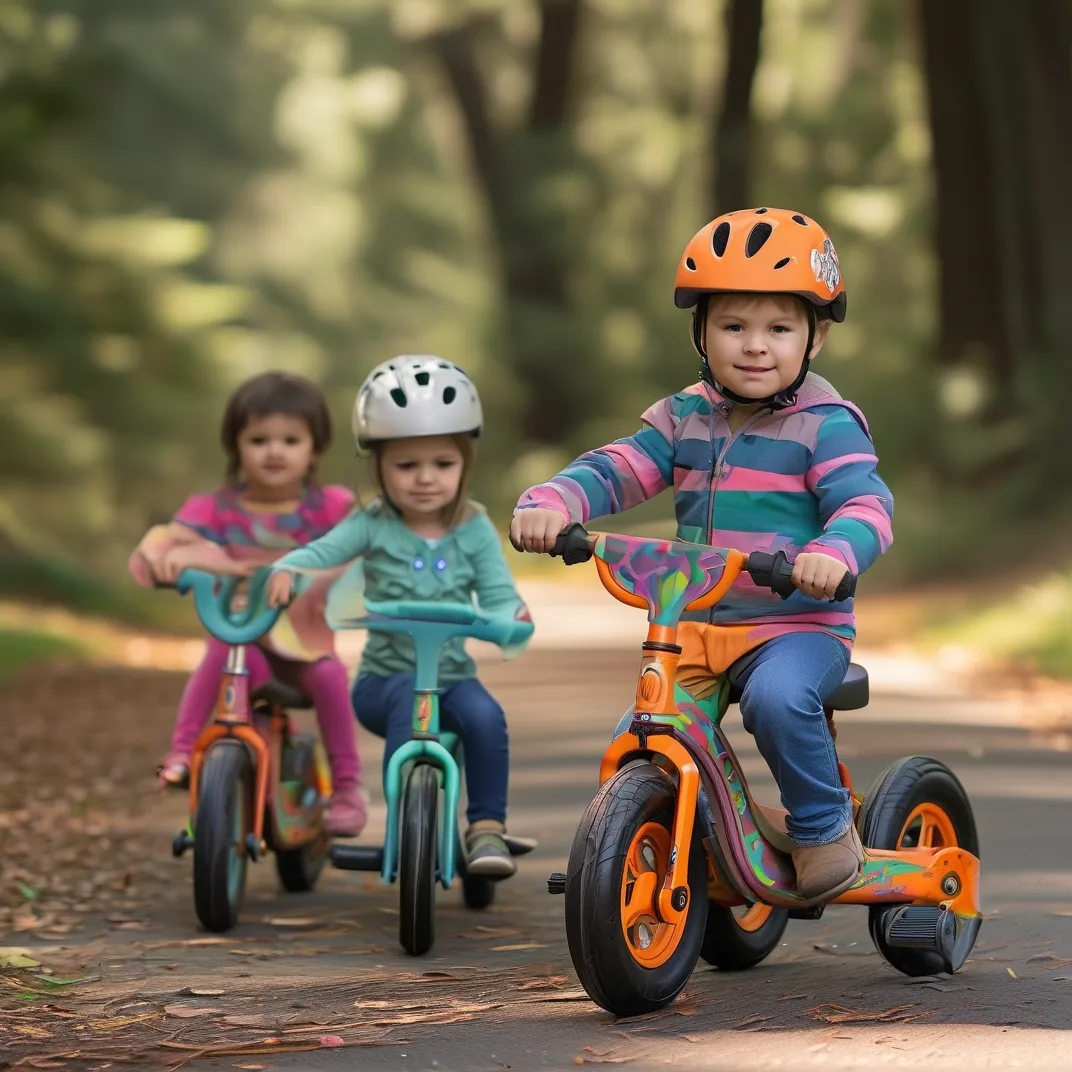Choosing the right bicycle for your 3-year-old can feel overwhelming, especially with the ongoing debate between balance bikes and training wheels. Both options aim to build confidence and motor skills, but their approaches differ significantly. This guide breaks down safety features, developmental benefits, and practical considerations to help you make an informed decision.
Why the Right Bike Matters for Toddlers
At age 3, children are rapidly developing coordination and spatial awareness. According to the American Academy of Pediatrics (AAP), early exposure to pedal-free bikes can improve balance and reduce injury risks compared to traditional bicycles. A poorly fitted bike or unstable design may discourage kids from riding or even lead to accidents. Prioritize lightweight frames (under 10 lbs), adjustable seats, and puncture-proof tires to ensure safety and adaptability as your child grows.
Balance Bikes: Building Confidence Through Natural Learning
Balance bikes, which lack pedals and chains, encourage toddlers to propel themselves using their feet. Studies from Pediatric Exercise Science show that children using balance bikes often transition to pedal bikes faster than those using training wheels. Key advantages include:
– Improved Balance: Kids learn to steer and stabilize without relying on external supports.
– Lightweight Design: Most models weigh 6–9 lbs, making them easy for small children to maneuver.
– Safety: Lower center of gravity reduces tipping risks.
Popular options like the Strider 12 Sport and Woom 1 Balance Bike feature adjustable seats (11–19 inches) and airless tires for low-maintenance use.
Training Wheels: Familiarity vs. Limitations
Training wheels attach to standard bicycles, offering stability through rigid metal supports. While they mimic the look of adult bikes, research by Safe Kids Worldwide highlights potential downsides:
– False Stability: Children may lean heavily on the wheels, delaying true balance development.
– Weight Issues: Bikes with training wheels often exceed 15 lbs, posing challenges for small riders.
– Terrain Restrictions: Uneven surfaces or sharp turns increase tipping risks despite added supports.
If opting for training wheels, choose models with adjustable height (e.g., Royalbaby Freestyle) and pair them with helmets meeting CPSC safety standards.
Head-to-Head Comparison: Key Factors for Parents
| Feature | Balance Bikes | Training Wheels |
|---|---|---|
| Learning Curve | 2–4 weeks | 4–8 weeks |
| Weight | 6–10 lbs | 12–18 lbs |
| Long-Term Use | Up to age 5 | Requires bike replacement |
| Safety | Low fall risk | Higher tip-over risk |
Data from a 2024 Consumer Reports analysis shows 78% of parents reported fewer falls with balance bikes versus training wheels during initial use.
2025 Safety Upgrades Every Parent Should Know
Recent regulatory changes emphasize enhanced durability testing and materials:
1. Non-Toxic Grips: Look for ASTM F963-certified handlebars to avoid harmful chemicals.
2. Reflective Elements: New EU standards require reflective stickers or wheel rims for visibility.
3. Adjustable Handlebars: Brands like Guardian Bikes now offer 360-degree rotating handles to prevent wrist injuries during falls.
Always check for CPSC or EN71 certification labels before purchasing.
How to Choose: Questions to Ask Yourself
- Is my child cautious or adventurous? Balance bikes suit bold learners; training wheels may comfort hesitant riders.
- Where will they ride? Pavement-friendly training wheels struggle on gravel, while balance bikes handle most terrains.
- Budget considerations: Balance bikes ($80–$150) often cost less than full bicycles + training wheels ($120–$250).
Top Picks for 2025
- Best Balance Bike: Bixe 12” Explorer – Ultra-light (7.3 lbs), sealed bearings, 3-year warranty.
- Best Training Wheels Option: Huffy Rock It – Steel frame, removable wheels, rear foot brake.
- Budget-Friendly: Retrospec Cub Kids Balance Bike – $89, EVA foam tires, tool-free seat adjustment.
Final Thoughts
While balance bikes align with modern developmental guidelines, training wheels remain a valid choice for families preferring traditional setups. Focus on your child’s temperament, local riding terrain, and long-term budget. Whichever option you choose, prioritize helmets and supervise initial rides—because nothing beats the joy of watching your toddler pedal (or glide) toward independence safely.
